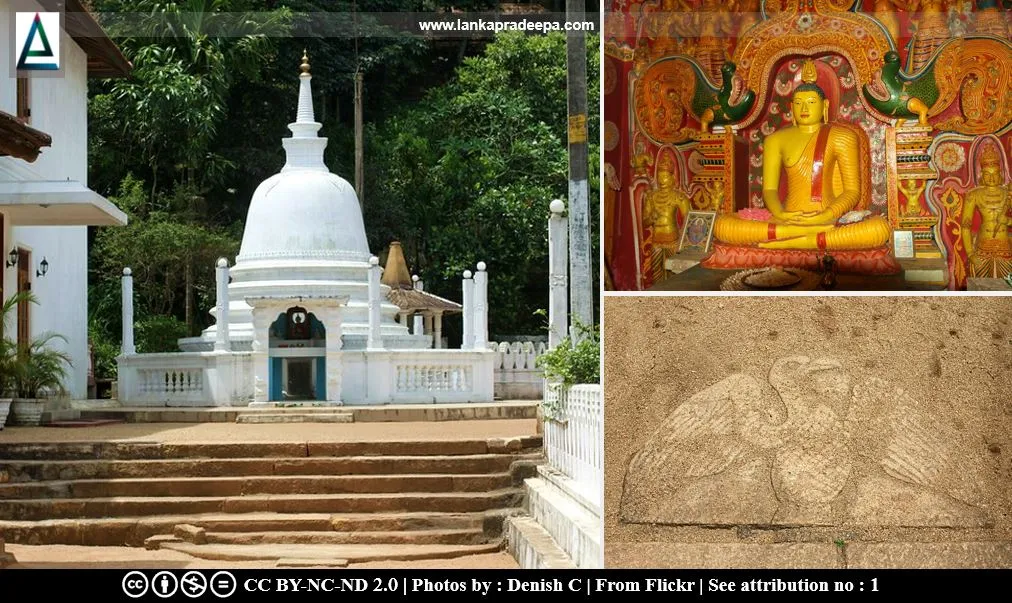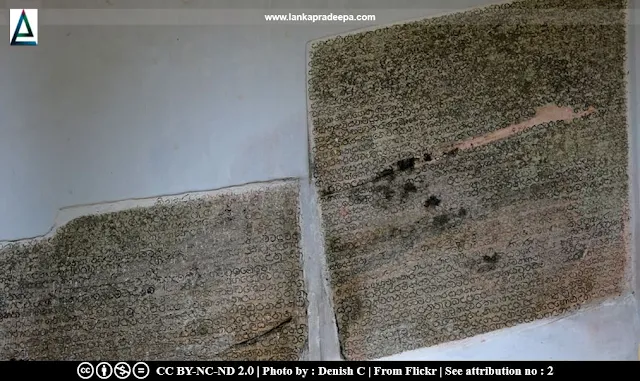
Asgiri Maha Viharaya (Sinhala: අස්ගිරි මහා විහාර සංකීර්ණය) is a complex of Buddhist temples situated within Kandy city limits in Kandy District, Sri Lanka. It is the headquarters of the Asgiriya Chapter of Siyam Nikaya, one of the two Buddhist monasteries that hold the custodianship of the sacred Tooth Relic of the Buddha housed in the Temple of the Tooth. The Mahanayake Thera (the chief monk) of this temple, together with the Mahanayaka Thera of Malwathu Maha Viharaya and Diyawadana Nilame, play the role of the three custodians of the sacred Tooth Relic.
The Asgiri Vihara complex consists of a collection of Buddhist temples and monk residences located in close proximity to each other. They include Asgiri Gedige Viharaya, Hayagiri Wijayasundararamaya, Maha Viharaya and several other temples (Abeyawardana, 2004).
History
Establishment
As mentioned in historical records, a general named Siriwardhana on the instructions of King Parakramabahu IV (1302-1326 A.D.) of Kurunegala, established a Buddhist monastery in the area known as Katubulu (Abeyawardana, 2004). In the beginning, the monastery was called Valasgala as the first group of Buddhist monks who took residence in this monastery were drawn from Valasgala in Yapahuwa (Abeyawardana, 2004). It is said that this monastery was initially standing on the ground where the present Trinity College is situated (Abeyawardana, 2004). According to the belief of some, the monastery was later shifted to Talgahamula Viharaya built by Queen Chandrawathi, the mother of King Vikramabahu III (1326-1374 A.D.) of Gampola (Abeyawardana, 2004).
The temples of the Vihara complex
Asgiri Gedige Viharaya
(7°17'57.6"N 80°38'08.4"E)
Also known as Adahanamaluwa Gedige Viharaya, this temple is believed to be the second oldest stone-built construction in Kandy (Abeyawardana, 2004). According to local belief, this is the ancient shrine called Dalada Gaman Viharaya or Chandrawathi Viharaya built in memory of Queen Chandrawathi (or Asgiriya Deviya), the mother of King Vikramabahu III (Rajapakse, 2016).
In the Sinhalese language, "Adahana Maluwa" means "the cremation ground". Since the Gampola Period, this site has been used as the place where the bodies of the kings of Kandy and their family members were burned (Rajapakse, 2016). Queen Chandrawathi was one of the earliest to be cremated here (Abeyawardana, 2004). Except for King Vimaladharmasuriya I (1590-1604 A.D.) and King Sri Vikrama Rajasinghe (1798-1815 A.D.), all other Kandyan Kings have been cremated at this place (Abeyawardana, 2004). Some of the tombs at this place are said to have been removed because of the construction of the Kandy-Matale railway line by the British colonial government during the period 1878-1889 (Abeyawardana, 2004). Besides the royals, this site had also been used to cremate Mahanayaka Theras of the Asgiriya and Malwatta Chapters (Abeyawardana, 2004).
The Tooth Relic of the Buddha which had been concealed in Delgamuwa Viharaya is said to have been kept temporary at this place by King Vimaladharmasuriya I (1590-1604 A.D.) before it was deposited in the newly built Temple of the Tooth shrine in Kandy (Rajapakse, 2016). It is also said that, in one of the annual Randoli Perahera pageants, the casket containing the Tooth Relic was kept at this place for one night at the request of King Kirti Sri Rajasinghe [(1747-1782 A.D.) Abeyawardana, 2004].
This Viharaya consists of three Maluwas (terraces), viz; Uda Maluwa (upper terrace), Meda Maluwa (centre-terrace), Palle Maluwa (lower terrace). The Gedige building that has a dome shape or a vaulted roof is situated at the upper terrace. The architecture of this building is similar to that of the Natha Devalaya in Kandy and Upulvan Devalaya in Udunuwara (Abeyawardana, 2004).
This building comprises a Garbagruha (the sanctum), Antaralaya (the vestibule) and a Hewisi-mandapaya (a drumming hall). A statue of Samadhi Buddha under a Makara Thorana (dragon arch) is found in the sanctum. The walls of the vestibule are decorated with paintings of the Buddhist themes such as the images of Arhats, Suwisi-Buddhas, Jataka tales etc (Rajapakse, 2016).
Hayagiri Wijayasundararamaya
(7°17'56.5"N 80°37'47.2"E)
The two image houses known as Parana Viharaya (the old temple) and Aluth Viharaya (the new temple) and the Pohoya-sima building are considered the old monuments of this temple.
The Parana Viharaya was built in 1766 by Pilimatalawe Wijesundara Rajakaruna Disawe on the instruction of King Kirti Sri Rajasinghe (1747-1782 A.D.) and it was bestowed to Urulewatte Sri Piyadassi Dhammasiddhi Thera, the first Mahanayaka of the Asgiriya Chapter from 1753 to 1778 (Abeyawardana, 2004). The shrine houses a Samadhi Buddha statue under a Makara Thorana. Figures of Dhammasiddhi Thera and Pilimatalawe Disawa are found drawn on the walls (Abeyawardana, 2004).

The large building of which the roof is supported on 20 columns and located near Parana Viharaya is the Aluth Viharaya. It was constructed on the instruction of King Sri Vikrama Rajasinghe (1798-1815 A.D.) by Pilimatalawe Disawa Adhikarama, a son of Pilimatalawe Disawa (Abeyawardana, 2004). The shrine houses a reclining Buddha statue of about 11.08 m long (Abeyawardana, 2004). Figures of Sri Vikrama Rajasinghe and Pilimatalawe Disawa Adhikaram are found drawn on the walls (Abeyawardana, 2004). According to an inscription fixed on the western wall of this shrine, land have been assigned to maintain this temple in 1801 (Abeyawardana, 2004).
Maha Viharaya
(7°17'58.0"N 80°37'55.3"E)
The Sima-malakaya where the ceremony of higher ordination for monks of the Asgiriya Chapter is held is located at this premises (Abeyawardana, 2004). The residential quarters of the present Mahanayaka of the Asgiriya Chapter is also located here.
A protected site
The ancient Vihara-geya situated within Asgiri Gedige Vihara premises in the Kandy city limits in the Divisional Secretary’s Division of Kandy is an archaeological protected monument, declared by a government notification published on 14 May 1970.
Attribution
References
1) Abeyawardana, H.A.P., 2004. Heritage of Kandurata: Major natural,
cultural and historic sites. Colombo: The Central Bank of Sri Lanka.
pp.27-30.
2) Rajapakse, S., 2016. Pauranika Sthana Ha Smaraka: Mahanuwara Distrikkaya (In Sinhala). Archaeological Department of Sri Lanka. ISBN:955-9159-34-8. pp.44-45.
3) The Gazette of the Democratic Socialist Republic of Sri Lanka. No: 14897. 14 May 1970.
2) Rajapakse, S., 2016. Pauranika Sthana Ha Smaraka: Mahanuwara Distrikkaya (In Sinhala). Archaeological Department of Sri Lanka. ISBN:955-9159-34-8. pp.44-45.
3) The Gazette of the Democratic Socialist Republic of Sri Lanka. No: 14897. 14 May 1970.
Location Map
This page was last updated on 21 January 2023

